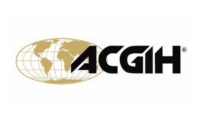New bipartisan bill aims to enhance EPA's oversight of indoor air quality
The proposed legislation would direct the EPA to establish a list of indoor contaminants and voluntary guidelines

Photo credit: shironosov / iStock / Getty Images Plus
A new bipartisan bill has been introduced in the House of Representatives with the goal of strengthening the Environmental Protection Agency's (EPA) oversight of indoor air quality (IAQ). The bill, known as the Indoor Air Quality and Healthy Schools Act, was introduced by Rep. Brian Fitzpatrick (R-Pa.) and Rep. Paul Tonko (D-N.Y.).
If passed, the legislation would direct the EPA to expand its Indoor Environments Division and establish a list of significant indoor contaminants. The bill would also require the agency to develop voluntary guidelines for reducing the risk of exposure to these contaminants.
One of the key focuses of the bill is to address the growing concerns surrounding IAQ, particularly in schools and childcare facilities. The COVID-19 pandemic has brought increased attention to the importance of maintaining healthy indoor environments, and the bill seeks to build on this momentum.
“Despite the immense and urgent threat poor indoor air quality poses, precious little has been done to address this issue,” said Tonko in a statement. The Indoor Air Quality and Healthy Schools Act, Tonko continued, would give the EPA “the tools to face this problem head on, by taking action to establish science-based guidelines and promote effective tools and best practices to minimize indoor health risks.”
In addition to expanding the EPA's oversight of IAQ, the bill would also require the agency to conduct a national assessment of IAQ in schools and childcare facilities. This assessment would be used to identify the most pressing IAQ issues and inform the development of targeted guidelines and best practices.
The bill has received support from a wide range of organizations, including those focused on healthy building and HVAC standards. Proponents argue that the legislation is necessary to protect public health and ensure that all individuals have access to clean and safe indoor environments.
The Indoor Air Quality and Healthy Schools Act is currently under review by the House Committee on Energy and Commerce.
Looking for a reprint of this article?
From high-res PDFs to custom plaques, order your copy today!





